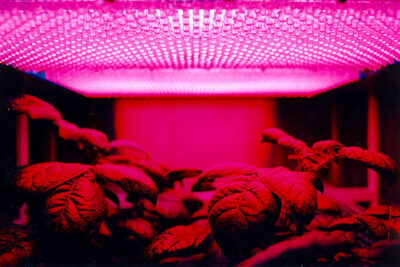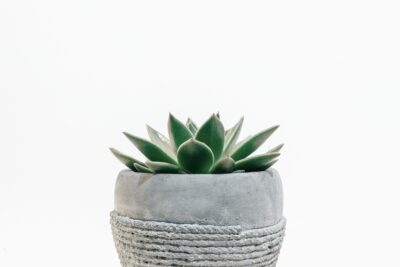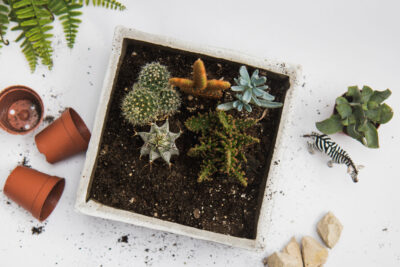
Optimal Outdoor Climate for Succulents: Temperature Range Tips

Succulents are a popular choice for outdoor gardening due to their unique and eye-catching appearance. These plants have adapted to survive in arid and desert-like conditions, making them a perfect fit for those who want low-maintenance and drought-tolerant options. However, it is crucial to understand the optimal outdoor climate for succulents to ensure their health and longevity.
We will delve into the temperature range that is best suited for succulents in an outdoor setting. We will explore the ideal temperature conditions during different seasons and provide tips on how to protect your succulents from extreme temperatures. Additionally, we will discuss the impact of temperature on succulent growth and how to create a microclimate to optimize their well-being. By understanding the optimal temperature range for succulents, you can create a thriving outdoor garden that showcases these stunning plants.
- Succulents thrive in temperatures between 60 and 80 degrees Fahrenheit
- Avoid exposing succulents to temperatures below 40 degrees Fahrenheit
- Provide succulents with ample sunlight, but avoid direct, scorching heat
- Protect succulents from extreme temperature fluctuations
- Consider using shade cloth or a greenhouse to regulate temperatures for sensitive succulents
- Monitor soil moisture levels to ensure proper hydration for succulents in different temperature ranges
- Frequently Asked Questions
Succulents thrive in temperatures between 60 and 80 degrees Fahrenheit
When it comes to maintaining healthy succulents, temperature is a crucial factor to consider. These resilient plants thrive in a specific temperature range, typically between 60 and 80 degrees Fahrenheit. Keeping your succulents within this optimal outdoor climate will ensure their well-being and encourage growth.
Why is the temperature range important?
The temperature range of 60 to 80 degrees Fahrenheit is ideal for succulents because it mimics their natural habitat. Most succulents originate from arid regions where temperatures are warm during the day and cool down at night. By providing them with a similar climate, you are creating the perfect conditions for their growth and development.
Tips for maintaining the optimal temperature range
Here are some tips to help you maintain the optimal temperature range for your outdoor succulents:
- Monitor the thermometer: Invest in a reliable outdoor thermometer to keep track of the temperature in your succulent garden. This will allow you to know if the temperature is within the desired range or if adjustments need to be made.
- Choose the right location: When selecting a spot for your succulents, consider the microclimate of your outdoor space. Find an area that receives plenty of sunlight during the day and provides some shade in the afternoon to prevent overheating.
- Protect from extreme temperatures: Succulents can tolerate temperature fluctuations, but extreme heat or cold can be detrimental to their health. During heatwaves or cold snaps, consider providing some protection, such as moving them indoors or providing shade or insulation.
- Utilize microclimates: If you live in an area with extreme temperatures, you can create microclimates within your garden to provide the ideal conditions for your succulents. Use features like rocks, shade cloths, or strategically placed plants to create pockets of different temperatures.
- Water wisely: Proper watering is essential for succulents, as it helps regulate their temperature. Water your succulents in the morning to allow excess moisture to evaporate during the day, preventing overheating. Avoid watering in the evening, as wet soil can retain heat and potentially harm the roots.
By following these tips and maintaining the optimal temperature range, your outdoor succulents will thrive and become a beautiful addition to your garden.
 The Ideal Amount of Sunlight for Succulent Growth: A Guide
The Ideal Amount of Sunlight for Succulent Growth: A GuideAvoid exposing succulents to temperatures below 40 degrees Fahrenheit
Understanding the optimal temperature range for succulents
Succulents are a popular choice for outdoor gardening due to their ability to thrive in various climates. However, it is important to be mindful of the temperature conditions they are exposed to, as extreme temperatures can severely affect their growth and overall health.
One crucial aspect to consider is the lower temperature limit for succulents. These plants are not frost-tolerant, and exposing them to temperatures below 40 degrees Fahrenheit can lead to damage or even death. Therefore, it is essential to provide adequate protection or bring them indoors during colder months.
Protecting succulents from cold temperatures
Fortunately, there are several measures you can take to shield your succulents from freezing temperatures. Here are some tips:
- Move them indoors: If you live in an area with harsh winters, consider bringing your succulents indoors. This will ensure they are protected from cold drafts and freezing temperatures.
- Provide shelter: If bringing them indoors is not possible, create a sheltered space for your succulents. This can be done by placing them near a wall or beneath a canopy, providing some protection from cold winds.
- Use protective coverings: Covering your succulents with frost blankets or burlap can provide an extra layer of insulation during colder nights. Make sure the covering is secure but not too tight, allowing some airflow.
- Monitor weather forecasts: Stay informed about upcoming cold spells or frost warnings. This will help you take timely action to protect your succulents from potential harm.
Optimal temperature range for succulents
While succulents are sensitive to cold temperatures, it is also important to understand their preferred temperature range for optimal growth. In general, most succulents thrive in temperatures between 60 and 80 degrees Fahrenheit (15 to 27 degrees Celsius).
However, it is worth noting that different succulent species may have specific temperature preferences. Some varieties may tolerate slightly cooler or warmer temperatures, so it is beneficial to research each species individually for precise temperature requirements.
By providing your succulents with the right temperature conditions, you can ensure their longevity, vibrant colors, and overall well-being.
 Sunlight Needs of Succulent Plants: Finding the Perfect Balance
Sunlight Needs of Succulent Plants: Finding the Perfect BalanceProvide succulents with ample sunlight, but avoid direct, scorching heat
Succulents are known for their love of sunlight, but it's essential to strike the right balance when it comes to their exposure. While they thrive in bright, natural light, direct, scorching heat can be detrimental to their well-being. To ensure optimal growth and avoid sunburn, consider the following tips:
- Choose the right location: Place your succulents in an area that receives at least six hours of sunlight each day. However, make sure to provide them with some shade during the hottest part of the day, especially in regions with intense summer heat. This could be under the shade of a tree or a patio cover.
- Monitor the intensity of sunlight: Keep an eye on the intensity of the sunlight your succulents receive. If the leaves start turning pale or yellow, it may be an indication that they are getting too much direct sunlight. Consider moving them to a slightly shadier spot.
- Protect from extreme temperatures: Succulents are generally tolerant of temperature fluctuations, but extreme heat can pose a threat. In scorching summer months, it's advisable to provide some protection, such as using shade cloth or moving the plants indoors during heatwaves.
By providing your succulents with ample sunlight while protecting them from direct, scorching heat, you can create an optimal outdoor climate for their growth. Remember to monitor their well-being and make adjustments as needed to ensure they thrive in their environment.
Protect succulents from extreme temperature fluctuations
Succulents are known for their ability to thrive in arid and dry environments, making them popular choices for outdoor gardens. However, it's important to note that while succulents are resilient, they are still sensitive to extreme temperature fluctuations. To ensure the optimal growth and health of your succulents, it's crucial to provide them with a suitable outdoor climate.
One of the main factors to consider when it comes to the outdoor climate for succulents is temperature. Succulents generally prefer warm and moderate temperatures, but the specific temperature range can vary depending on the type of succulent. It's important to understand the temperature requirements of your specific succulent species to provide them with the ideal conditions.
Temperature range for succulents
The temperature range for succulents typically falls between 60°F (15°C) and 85°F (29°C). This range is considered optimal for their growth and overall health. However, it's important to note that different succulent species may have slightly different temperature preferences.
During the summer months, succulents can tolerate higher temperatures, and some may even thrive in temperatures above 85°F (29°C). However, it's crucial to provide them with adequate shade and protection from intense sunlight during hot summer days. Excessive heat can lead to sunburn and damage the succulent's leaves.
 Can Peat Moss Be Beneficial as a Soil Amendment for Succulents?
Can Peat Moss Be Beneficial as a Soil Amendment for Succulents?In contrast, during the winter months, succulents may require protection from frost and freezing temperatures. Most succulents are not frost-tolerant, and prolonged exposure to cold temperatures can cause irreversible damage. It's recommended to bring potted succulents indoors or provide them with frost protection during colder months.
Tips for maintaining optimal temperature for succulents
- Choose the right location: Place your succulents in an area that receives ample sunlight but is also sheltered from extreme temperature fluctuations.
- Monitor temperature regularly: Use a thermometer to keep track of the temperature in your succulent's environment. This will help you make necessary adjustments and provide protection when needed.
- Provide shade: Shield your succulents from intense afternoon sun by using shade cloth or placing them under a patio or tree canopy.
- Use frost protection: If you live in an area with cold winters, provide frost protection by covering your outdoor succulents with blankets or moving them indoors.
By following these temperature range tips and providing the right conditions, you can ensure that your outdoor succulents thrive and remain healthy throughout the year.
Consider using shade cloth or a greenhouse to regulate temperatures for sensitive succulents
When it comes to growing succulents, one of the key factors to consider is the outdoor climate. While succulents are known for their ability to thrive in arid conditions, it is important to provide them with the optimal temperature range to ensure their health and longevity.
If you live in an area with extreme temperature variations or harsh weather conditions, it may be beneficial to consider using shade cloth or a greenhouse to regulate the temperatures for your sensitive succulents. These structures can provide protection from excessive heat, cold, or intense sunlight, creating a more favorable environment for your plants.
Here are some temperature range tips to help you maintain an optimal outdoor climate for your succulents:
1. Ideal Temperature Range
Succulents thrive best in temperatures between 60°F (15°C) and 80°F (27°C). This range provides a balance between warmth and coolness, allowing them to grow and flourish.
 Can Succulents Thrive Outdoors in Any Climate and Season?
Can Succulents Thrive Outdoors in Any Climate and Season?2. Avoid Extreme Temperatures
While some succulents can tolerate brief periods of extreme temperatures, it is generally recommended to avoid exposing them to temperatures below 40°F (4°C) or above 90°F (32°C). Sustained exposure to extreme temperatures can cause stress and damage to the plants.
3. Protect from Frost
Many succulents are not frost-tolerant, so it is crucial to protect them from freezing temperatures. If frost is expected, consider bringing your potted succulents indoors or covering them with a frost cloth or blanket to shield them from the cold.
4. Monitor Sun Exposure
While succulents love sunlight, intense and prolonged exposure to direct sunlight during the hottest part of the day can cause sunburn or scorch their leaves. It is advisable to provide partial shade or use a shade cloth to filter the sunlight, especially during the peak hours.
5. Adjust for Seasonal Changes
Depending on the climate in your region, you may need to make adjustments to the temperature regulation techniques as the seasons change. For example, during the summer months, you may need to increase shading or ensure proper ventilation in a greenhouse to prevent overheating.
By following these temperature range tips and providing the optimal outdoor climate for your succulents, you can ensure their well-being and enjoy their beauty for years to come.
Monitor soil moisture levels to ensure proper hydration for succulents in different temperature ranges
Succulents are known for their ability to thrive in harsh outdoor conditions, but it’s important to understand the optimal temperature range for these resilient plants. Monitoring soil moisture levels is crucial to ensure proper hydration, especially in different temperature ranges.
 Unraveling the Secrets of Succulents: Thriving in Diverse Environments
Unraveling the Secrets of Succulents: Thriving in Diverse Environments1. Ideal temperature range for succulents
When it comes to succulents, the ideal temperature range is typically between 60°F (15°C) and 80°F (27°C). Most succulents prefer temperatures on the warmer side but can tolerate mild fluctuations.
However, it’s crucial to remember that different species of succulents have unique temperature preferences. Some varieties, like Echeverias and Sedums, can withstand temperatures as low as 40°F (4°C) without significant damage. On the other hand, certain succulents, such as Aeoniums and Haworthias, are more sensitive to extreme cold and require temperatures above 50°F (10°C).
It’s essential to research the specific temperature requirements for the succulents in your collection to ensure their optimal growth and health.
2. Protecting succulents in extreme temperatures
While succulents can handle a wide range of temperatures, extreme heat or cold can be detrimental to their well-being. Here are some tips to protect your succulents:
- Shade during scorching summers: If you live in an area with scorching summers, provide some shade to prevent your succulents from getting sunburned. Move them to a location with indirect sunlight or use shade cloth to filter the intense sun rays.
- Protect from frost: In regions with frosty winters, it’s crucial to shield your succulents from freezing temperatures. Bring them indoors or use frost cloth or blankets to protect them from frost damage.
- Monitor soil moisture: Extreme temperatures can affect the soil moisture levels. In hot weather, the soil may dry out more quickly, requiring more frequent watering. Conversely, in cold weather, succulents may require less watering as they enter a dormant state.
3. Adapting to temperature changes
Succulents are resilient plants that can adapt to temperature changes to some extent. However, sudden and drastic temperature fluctuations can cause stress and harm their growth. Here’s how you can help your succulents adapt:
- Gradual acclimatization: When transitioning your succulents from indoor to outdoor environments or vice versa, it’s best to acclimate them gradually. Start by placing them in a shaded or protected area for a few hours a day, gradually increasing their exposure to the new temperature conditions.
- Provide insulation: During extreme temperature changes, consider using insulation techniques to protect your succulents. Mulching around the base of the plants can help regulate soil temperature and retain moisture.
- Observation and adjustment: Keep a close eye on your succulents when temperature changes occur. If you notice signs of stress or damage, adjust their placement or provide additional protection accordingly.
Understanding the optimal temperature range for succulents is crucial for their well-being. Monitoring soil moisture levels, protecting them from extreme temperatures, and helping them adapt to changes will ensure that your succulents thrive in any outdoor climate.
Frequently Asked Questions
1. What is the optimal temperature range for succulents?
The optimal temperature range for succulents is between 60°F (15°C) and 80°F (27°C).
 The Ultimate Guide: Maximum Size of Indoor and Outdoor Succulents
The Ultimate Guide: Maximum Size of Indoor and Outdoor Succulents2. Can succulents tolerate freezing temperatures?
Most succulents cannot tolerate freezing temperatures and can be damaged or killed if exposed to frost.
3. How do succulents respond to extreme heat?
Succulents are generally tolerant of high temperatures, but prolonged exposure to extreme heat can lead to sunburn and dehydration.
4. Are there specific temperature requirements for different types of succulents?
Yes, different types of succulents have varying temperature preferences. It is best to research the specific needs of each succulent species or cultivar.
If you want to read more articles similar to Optimal Outdoor Climate for Succulents: Temperature Range Tips, you can visit the Growing Conditions category.






You Must Read